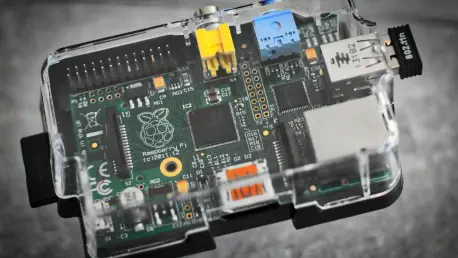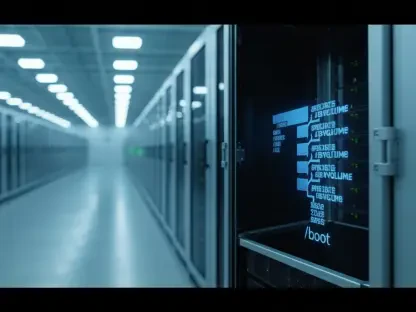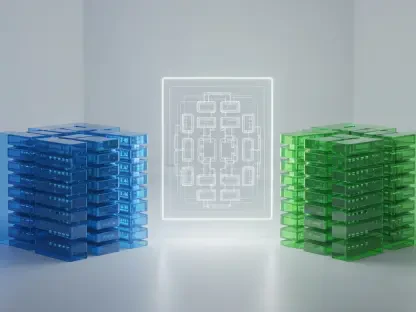In today’s rapidly evolving technological landscape, open-source Internet of Things (IoT) frameworks have taken center stage as pivotal tools for innovation, cost-efficiency, and scalability. As IoT ecosystems expand and diversify, these frameworks have emerged as essential assets for developers, startups, and enterprises seeking robust solutions that are both flexible and customizable. With the demand for IoT devices and applications on the rise, open-source frameworks are not just supporting developers in creating novel solutions but redefining how various industries leverage IoT technology. This article explores the transformative role these frameworks play in the IoT ecosystem, their inherent advantages, and the leading platforms that are shaping the future of IoT applications.
Expanding Horizons of Open-Source IoT Frameworks
Rise of Open-Source IoT Frameworks
Open-source frameworks have witnessed a significant surge in adoption due to their inherent flexibility and cost-effectiveness, making them a preferred choice for various stakeholders in the IoT domain. The core value proposition of open-source frameworks lies in their ability to provide developers access to essential tools and libraries required for building IoT applications, all without the constraints of proprietary systems. This democratization of technology has enabled individuals and organizations from diverse backgrounds to engage in IoT development, fostering an environment rich in innovation and collaboration.
Moreover, the collaborative nature of open-source communities ensures that these frameworks constantly evolve to meet new demands and challenges. As more developers contribute to the development and refinement of these frameworks, there is a continuous influx of fresh ideas, security patches, and improvements, all of which contribute to creating more secure, scalable, and efficient IoT solutions. This community-driven approach not only enhances the frameworks’ features and capabilities but also strengthens the overall security and reliability of IoT deployments by promptly addressing potential vulnerabilities.
Benefits of Open-Source Frameworks
Open-source IoT frameworks offer numerous benefits that extend beyond basic cost savings, positioning them as key enablers in the IoT landscape. One of the most remarkable advantages is flexibility. These frameworks allow developers to modify, enhance, and distribute the code as per their specific requirements, which is especially valuable in an industry characterized by rapid technological advancements and shifting demands. This flexibility enables the creation of highly customized solutions that can seamlessly integrate into existing environments or provide niche functionalities tailored to specific use cases.
Additionally, open-source frameworks are often supported by extensive documentation and active user communities. This wealth of resources proves invaluable, especially for smaller organizations or individual developers who may not have access to extensive research and development (R&D) resources. Through forums, documentation, and collaborative platforms, developers can quickly find solutions to challenges, learn best practices, and share insights, ultimately enhancing their capabilities and accelerating the development process.
Leading Open-Source Frameworks in IoT
Kaa IoT Platform and ThingsBoard
Among the top contenders in the realm of open-source IoT frameworks are Kaa IoT Platform and ThingsBoard, both of which have garnered attention for their robust capabilities and exceptional adaptability. Kaa IoT Platform distinguishes itself through its ability to cater to both small-scale and comprehensive enterprise-level applications. Its highly customizable nature, combined with robust device management capabilities and real-time data processing, makes it an excellent choice for stakeholders seeking tailored solutions that align with specific industry needs. The platform’s comprehensive software development kits (SDKs) and application programming interfaces (APIs) further enhance its versatility, enabling developers to seamlessly integrate IoT functionalities into existing systems.
ThingsBoard, on the other hand, is renowned for its data management and visualization prowess. Capable of supporting multiple IoT protocols such as MQTT, CoAP, and HTTP, ThingsBoard is adept at aggregating and displaying data in meaningful and insightful ways. Its flexible rule engine allows for the implementation of complex logic tailored to specific use cases, while versatile data visualization widgets provide end-users with clear and actionable insights. Whether deployed in cloud environments or on-site, ThingsBoard proves its worth across a diverse range of applications, from home automation systems to sophisticated industrial monitoring solutions.
Eclipse IoT and Mainflux
Eclipse IoT and Mainflux further illustrate the diversity and reach of open-source IoT frameworks, offering unique strengths that cater to different segments of the IoT ecosystem. Eclipse IoT, developed through a collaborative community effort, empowers developers to build customized IoT applications by leveraging modular components from the broader Eclipse ecosystem. This comprehensive framework is particularly well-suited for applications in smart home solutions, automotive sectors, and healthcare, where adaptability and integration with numerous systems are paramount. The emphasis on modularity and customization ensures that Eclipse IoT can accommodate a wide range of requirements and preferences.
Mainflux, a robust framework designed for secure IoT deployments, offers flexibility by supporting a wide array of protocols and deployment options. Whether implemented on-site or in hybrid cloud environments, Mainflux provides scalable solutions tailored to industrial IoT, smart buildings, and healthcare analytics. Its architectural flexibility and advanced security measures make it a preferred choice for applications where data integrity and protection are critical considerations. By supporting various communication protocols, Mainflux ensures seamless interoperability between different devices and systems, fostering a cohesive and integrated IoT ecosystem.
The Role of Real-Time Processing and Security
Edge Computing and Real-Time Data Processing
A significant trend underpinning the advancement of IoT frameworks is the integration of edge computing and real-time data processing capabilities. In modern IoT deployments, particularly in applications ranging from smart homes to industrial automation, processing data at the edge offers several advantages. It reduces latency, as data is analyzed closer to its source, thus ensuring quicker decision-making and improving overall system performance. Open-source frameworks that support edge computing enable developers to implement these advantages seamlessly, meeting the demanding requirements of contemporary IoT applications.
Furthermore, real-time processing capabilities are crucial for specific IoT use cases, such as predictive maintenance and emergency response systems, where the ability to react to changing conditions instantaneously is imperative. Open-source frameworks excel in this domain, offering the necessary tools and libraries to facilitate real-time data analysis and action. The combination of edge computing and real-time processing fuels the transition toward more efficient, responsive, and autonomous IoT systems that can operate effectively in a wide array of environments.
Addressing Scalability and Security Concerns
The rapid expansion of IoT ecosystems brings with it two critical challenges: scalability and security. As the number of connected devices continues to grow, so does the volume of data generated and the complexity of managing diverse IoT assets. Open-source frameworks allow developers to harness the scalability required to accommodate increasing demands and data loads. By leveraging cloud-native architectures and microservices, these frameworks can scale horizontally, ensuring that IoT applications remain performant and responsive even as they expand.
Security, an ever-present concern in IoT deployments, benefits substantially from the transparency and collaborative nature of open-source frameworks. Access to the source code allows experts and community members to continuously evaluate and strengthen security measures. Security patches and updates are promptly developed and rolled out, thus mitigating vulnerabilities and reducing the risk of malicious exploits. This transparency not only enhances the security posture of IoT systems but also instills confidence among users who prioritize data protection and privacy.
Flexible Solutions Backed by Community
Strength of Community and Collaboration
One of the defining features of open-source IoT frameworks is the strength of their communities, which drive continuous improvement and spur innovation. The collaborative nature of these communities fosters an environment in which developers, researchers, and organizations pool their expertise, ideas, and feedback. Through collective efforts, challenges are addressed, bugs are fixed, and new features are introduced, ensuring that the frameworks evolve alongside technological advancements and user needs. This cooperative spirit gives open-source frameworks a distinct competitive edge, as they rapidly adapt to changing conditions and user demands.
Community-backed forums and knowledge-sharing platforms offer developers valuable resources to address technical challenges and refine their skills. Newcomers to the IoT domain can benefit from mentorship and guidance from experienced contributors, accelerating their journey from novice to proficient developer. Furthermore, the collective input from a diverse range of users fosters cross-pollination of ideas and innovation, resulting in more comprehensive and well-rounded solutions that address a multitude of IoT use cases.
Demand for Tailored and Customizable Solutions
The demand for tailored and customizable IoT solutions is a driving force behind the adoption of open-source frameworks. In today’s dynamic business environment, organizations require IoT systems that align closely with their strategic goals and operational requirements. Open-source frameworks facilitate this alignment by enabling developers to create bespoke solutions that cater to specific needs, whether it’s optimizing supply chain operations, monitoring environmental conditions, or implementing smart city initiatives. Developers can customize every aspect of the framework, from data collection and processing to storage and analysis, creating solutions that deliver measurable impact and value.
In addition, open-source frameworks empower businesses to avoid vendor lock-in, granting them autonomy in their technological choices. Organizations can select components, features, and integrations that best align with their long-term objectives, enabling them to remain agile and adaptable in a competitive landscape. This flexibility is particularly advantageous in sectors such as healthcare, manufacturing, and logistics, where the ability to customize IoT systems can lead to enhanced efficiency, innovative services, and improved customer experiences.
Future Trajectory and Opportunities
Emerging Trends in Open-Source IoT
Looking ahead, the future of open-source IoT frameworks is marked by transformative trends and emerging opportunities that promise to reshape industries and redefine technological possibilities. One prominent trend is the convergence of advanced technologies such as 5G, artificial intelligence (AI), and edge computing, which are revolutionizing how IoT systems operate. The deployment of 5G networks enables ultra-fast connectivity, providing the bandwidth necessary to support a vast array of connected devices and real-time applications. AI enhances the ability to derive meaningful insights from IoT data, automating complex processes and improving decision-making.
Another trend is the emphasis on security, with open-source frameworks adopting zero-trust security models and advanced encryption protocols to safeguard data privacy and integrity. As cybersecurity threats become increasingly sophisticated, IoT solutions must ensure robust protection against unauthorized access and data breaches. Open-source frameworks proactively address these challenges, implementing cutting-edge security measures that bolster user confidence and ensure compliance with stringent regulatory requirements.
Expanding Use Cases and Application Areas
The proliferation of open-source IoT frameworks is broadening the horizons of IoT applications across a diverse range of industries. In smart cities, open-source frameworks facilitate the deployment of intelligent infrastructure, enabling efficient management of public services such as transportation, energy, and waste management. Real-time data collection and analysis lead to insights that enhance urban planning and resource allocation, ultimately improving the quality of life for residents.
In agriculture, IoT frameworks are powering precision farming practices that optimize crop yields and reduce resource consumption. By monitoring environmental conditions and soil health, farmers can make data-driven decisions that enhance productivity while minimizing environmental impact. Similarly, in the healthcare sector, IoT frameworks support remote patient monitoring, enabling continuous assessment and timely interventions for better health outcomes. The versatility and adaptability of open-source frameworks drive their application in a myriad of fields, unlocking new possibilities for innovation and growth.
Advancing Towards a Connected Future
In the ever-changing world of technology, open-source Internet of Things (IoT) frameworks have become key drivers of innovation, offering cost-effective and scalable solutions. As IoT ecosystems grow, these frameworks are crucial for developers, startups, and businesses that need adaptable and customizable tools. With the surge in IoT devices and applications, open-source frameworks not only help developers create innovative solutions but also transform how industries use IoT technology.
These frameworks bring significant advantages, including flexibility, lower costs, and the ability for community-driven improvements. They empower developers to tailor solutions to specific needs without being locked into proprietary systems, fostering a collaborative environment where improvements are shared. This openness has sparked creativity and shared problem-solving, leading to faster technological advancements.
Moreover, the leading open-source platforms are carving the future of IoT applications. Platforms like Node-RED, Kaa, and ThingsBoard are setting new standards by offering comprehensive tools that simplify the integration and management of IoT devices. Their open nature ensures continuous evolution and innovation, as developers can contribute to and enhance the frameworks. In summary, open-source IoT frameworks are central to modern technological innovation, shaping a future where IoT applications are more accessible, efficient, and adaptable across various industries.









